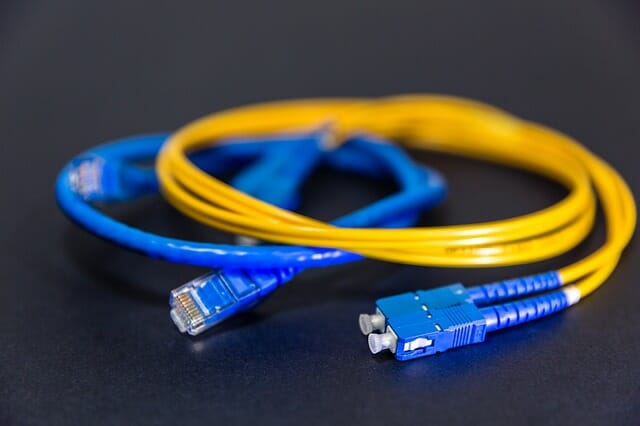Category: Structured Cabling
January 3, 2019
Most people don’t give a lot of thought to how the internet does what it does for them, just that it works when they want it to. However, knowing a little bit about how the system works is important for making sure that you’re getting the right networking solution for your situation. Fiber optic cabling is a great alternative to traditional network cables because they are faster, more reliable, and more durable. But why are they more reliable and how exactly do these cables work? Let’s take a look!

Traditionally, networking cables are made of copper, which can be costly and less reliable than fiber optic. Fiber optic cables are made of light, reflective glass strands that are bundled into a reflective tube. The combination of these strands and the reflective tube they are in creates a clear path for information to be sent at a high speed. Because of the reflective properties of the glass and the tubing information can be sent up to sixty miles before it needs to be collected and resent further. This occurs at an equipment hut, once the information reaches the hut it can be sent out even further from there.
Fiber optic cables are cheaper than their copper counterparts in the long run, and they run less risk of damage over time. Fiber optics are also more reliable and transmit information faster than traditional traditional cables. The bandwidth capabilities of fiber optic are much higher than copper, and information can be sent further in less time. Because fiber optic cables use light to transmit information they also pose less of a risk of overheating than traditional copper cables do.
When your business relies on an internet connection it is important that you can depend on that connection, and that it is as efficient as possible. Making the switch to fiber optic can be intimidating if you don’t know how it works, or why it is a good option for you or your business. If you have questions about how fiber optic works or why it might be a good fit for you, contact us at Lanstar Systems, Inc today, we’d love to answer any questions you may have! We have you covered for all your mid-Atlantic fiber optic cabling needs!
Frederick County: Frederick (21701, 20702, 21703, 21709), New Market (21774) , Mount Airy (21771), Urbana (21704), Ijamsville (21754), Walkersville (21793), Libertytown (21762), Damascus (20872), and more.
Howard County: Clarksville (21029), Columbia (21044), Cooksville (21723), Dorsey (21075), Elkridge (21075), Ellicott City (21043), Fulton (20759), Glenelg (21737), Glenwood (21738), Granite (21163), Hanover (21076), Highland (20777), Jessup (20794), Lisbon (21765), Marriottsville (21104), North Laurel (20723), West Friendship (21794), Woodbine (21797), Woodstock (21163), and more.
Montgomery County: Olney (20832), Damascus (20872), Laytonsville (20882), Silver Spring (20910), Clarksburg (20871), Gaithersburg (20878), Germantown (20876), Bethesda (20816), Chevy Chase (20815), and more.
Baltimore County: Arbutus (21227), Catonsville (21228, 21250), Cockeysville (21030, 21031, 21065), Dundalk (21222), Edgemere (21219), Essex (21221), Garrison (21055), Lansdowne (21227), Lochearn (21207), Lutherville (21093), Middle River (21220), Milford Mill (21244), Overlea (21236), Owings Mills (21117), Parkville (21234), Park Heights (21215), Pikesville (21208), Randallstown (21133), Reisterstown (21136), Rosedale (21237), Timonium (21093), Towson (21204), White Marsh (21162), Woodlawn (21207), and more.
Carroll County: Eldersburg (21784), Finksburg (21048), Hampstead (21074), Manchester (21102), Marriottsville (21104), Taneytown (21787), Union Bridge (21791), Westminster (21157, 21158), Mount Airy (21771), New Windsor (21776), Sykesville (21784), Woodbine (21797), Taneytown (21787), and more.
And the rest of Maryland, Delaware, Washington, DC and Virginia